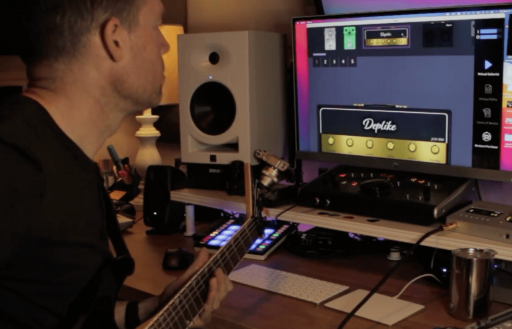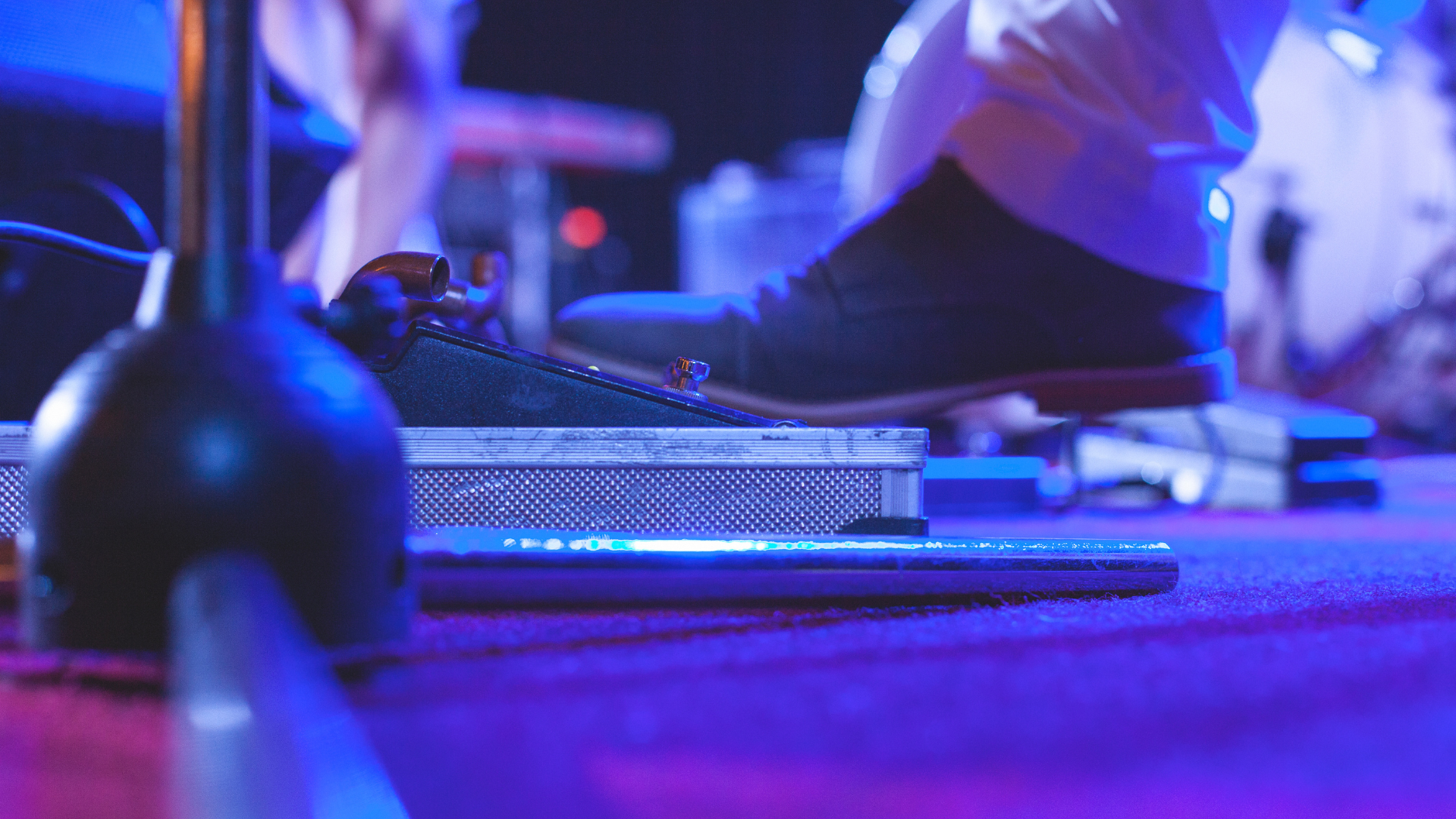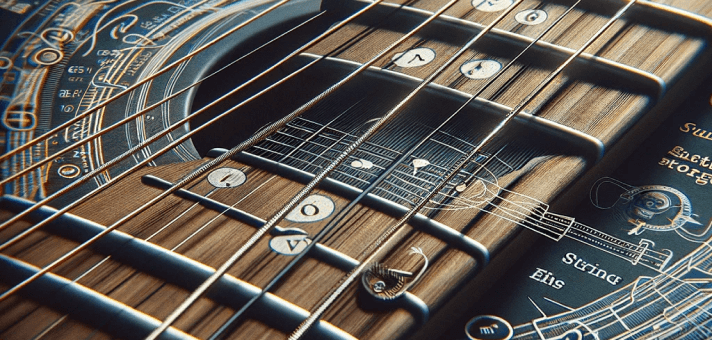Which Guitar Pedals Are Better: Digital or Analog?
The electric guitar has been around for a long time, starting in the 1930s and the 1940s. Even though it has become more versatile and has become more mainstream, the world has changed significantly since the commercial success of the 1950s and 1960s. Different gear has emerged while the instrument is still made from the same essential components, such as a wooden body and a single-coil or humbucker pickup.
The development of transistor technology has revolutionized the electric guitar. In the first instance, it led to the introduction of distortion pedals, which utilize a device known as a transistor to clip the signal. More innovations followed, such as the so-called bucket brigade devices, which allow users to replace various components such as the delays, flangers, and choruses with relatively small and lightweight ones.
In the 1980s, digital technology started to make its way into the music industry. This led to the development of various digital devices that can reproduce the sounds of vintage tube amps. Although some of these first examples may have been relatively small, today, there is an abundance of these devices that can reproduce the smooth and vintage tone of a guitar.
Which Guitar Pedals Are Better – Building a Guitar Pedalboard
When building a guitar pedalboard, you’ll inevitably encounter the debate about guitar effects pedals between digital and analog. There are a variety of effects available to you when it comes to creating a guitar, and some are just as popular as the individual stompbox. While some prefer to use single-effects, others gravitate toward multi-FX and modeling. These are becoming more popular among guitarists of all levels.
Getting the right pedal for your playing style can be a bit challenging. After all, there are so many different properties and specs that it’s hard to know what they mean. Instead of just finding out what to buy, you have more questions.
Most of the time, you’ll see a certain type of pedal labeled as an analog. This is because it has some of the same characteristics as an analog, such as delays or distortion. In this digital era, there are many arguments about which type of pedal is better for you.
In this guide, we’ll talk about the various types of digital and analog guitar pedals so that you can easily figure out which one will work best for you. It’s also hard to say which type of pedal will best fit your playing style, but we’ll try to help you sort out the differences between these two types.
What are Digital Pedals, and What are Analog Pedals?
The process of the way a guitar signal is the most important factor that affects its quality. Before the invention of microchips, people were making the instruments with analog components.
A transistor is a device responsible for providing a boost to a guitar’s output. Various components can make this happen, such as BJTs, JFETs, Silicon, and Opamps.
A clipping diode can also achieve tube distortion by “clipping” the top and bottom of a recording’s audio track. You have to combine this component with a transistor to produce the distortion effect.
Capacitors and resistors are also responsible for shaping the sound of a guitar. They can also knock off some of its top ends or provide a boost to the midrange.
You can also use a bucket brigade delay for more complex effects, such as phasers and delays. This type of integrated circuit is something you compose of thousands of transistors. These components are responsible for the degradation of the signal in many analog pedals.
The various component values and circuit designs of an analog pedal can greatly affect its sound quality. Besides temperature changes, other factors such as weather can also affect the stability of the device.
Which Guitar Pedals Are Better – Analog VS Digital Effects Pedals – What is the Difference?
Analog:
The easiest way to differentiate the digital and analog signals is by looking at their graphic representations. The former shows a continuous smooth line, while the latter shows a line that resembles stairs going up and down. Each dot in the digital signal is equally spaced.
The difference between digital and analog signals is that you compose the former of continuous waves, which is natural. This means that it reproduces the original audio recording. On the other hand, the signal is purer and more accurate with analog. The digital signal is different from the analog one in terms of resolution. For instance, the music played in vintage video games has a resolution of 8-bit. The standard audio CD has a resolution of 16 bits. Despite the limitations of digital technology, it’s still not possible to reproduce the same signal at higher resolutions. Unless you have the necessary equipment, it’s impossible to tell the difference between analog and digital signals.
Which Guitar Pedals Are Better – Analog Audio Equipment
When it comes to thinking about analog audio equipment, such as guitar pedals, it often brings a certain level of authenticity that’s not people usually associate with digital gear. According to musicians, the warmth of the tone provided by an analog pedal is unlike the artificial or bright sounds commonly associated with digital instruments. Guitarists have avoided using digital equipment for many years due to the perceived lack of clarity, reliability, and sonic characteristics. However, as technology has progressed, more musicians are now choosing to use analog instead.
These kinds of devices, commonly called bucket brigade devices, utilize various components in their circuits to drive a continuous signal. For instance, a BBD uses a series of capacitors and a switching transistor to convert an analog signal into an electrical impulse. Once the signal reaches one of these components, it goes out of the device and into the audio signal. Back in the day, BBDs were useful as they were more practical than other solutions, such as the cassette-based delays and choruses that were commonly used during the 1960s and 1970s.
Although there are many details involved in the design and operation of an analog device, the main difference between the digital and analog signals is that the former is composed of continuous waves. If we were to show the signal graphically, it would look like a continuous curve.
Digital:
While digital effects are different from traditional ones, they do the same thing when converting an electric guitar’s analog signal into a series of zeros and ones. This process is done through either a digital to analog converter or an A/D or analog to digital conversion. Everything processed as digital information is then sent back to the original analog signal using either D or A.
While the analog signal is still the same, a digital signal has its resolution. This is very different from a traditional analog signal, as it shows how the digital version has been processed. If the resolution is too low, it can cause the digital version to look like it’s been rendered to make it look like it’s been stretched out. This is where the sample rate and bit depth come in.
A digital signal is represented by zeroes and ones, and it can be used in various forms of media such as an MP3 or a MIDI keyboard. In the studio, digital doesn’t have the ability to reproduce the exact signal, but it will still be clean and crisp. This eliminates the need for manual recording and makes it easier to edit.
A digital delay pedal is different from a traditional one in that it has many parameters that it can set. These include the duration of the delay, the level of delay, and the amount of time it can run. You can create the effect by using a digital signal processing chip.
Digital Effects
Digital effects are very different from traditional ones in that they use an A/D conversion. This technology is very different from what you use in traditional gear, which uses a uniform and continuous signal to produce a sound. While the output of an analog signal is always free, you can hinder digital pedals by various factors.
The accuracy of a digital delay’s conversion depends on the model and model of the device you are using. Ideally, you need a high conversion rate to preserve the majority of the original signal.
How do you Compare Each Other?
Now comes the “contentious” part: how do these two effects compare? Many guitarists and artists, in general, swear by analog gear; thus, this is a touchy subject. Nothing surpasses the nice old “organic” analog tone for them. Simultaneously, with vastly higher bit depth and sampling rates, the reproduction of these phenomena becomes incredibly convincing.
Which Guitar Pedals Are Better – Why is Analog Better?
Although sampling rates and bit depth vary, it is generally believed that information will always be lost regardless of the rate at which it is processed. This means that the audio signal will always be digitally altered, and it’s only a question of whether or not our ears can detect it. Despite the advantages of digital technology, it is still believed that devices will never be as good as their analog counterparts.
Despite the advantages of using analog effects, they retain the warmth of their original tone. This is mainly due to the nature of BBDs, which cannot hold the information for long. The longer the capacitors stay in, the more information they lose. This results in shorter delay times, which is ideal for audio engineers. However, due to this loss of information, the resulting tone tends to be more “saturated” or “muffled.” This is the kind of thing that analog gear fans love.
Why is Digital Better?
Digital effects are more accurate and crystal clear than their analog counterparts. They also have the potential to store vast amounts of information. With a digital delay, you can delay a song’s duration up to a few seconds.
Today, with the increasing number of devices and the high sampling rate and bit depth of these effects, there’s no doubt that people can replicate them digitally. For instance, many digital effects can mimic the effects that you can commonly use in the production of certain types of songs, such as those featuring heavy flangers and distorted tape-based choruses.
Aside from being more practical, digital effects are also more versatile. With the increasing number of devices and the improving quality of modeling amps and multi-effects processors, it’s now easier than ever to replace your old rig. Just plug in a digital device such as the Axe-Fx or Kemper, and you’re good to go.
What Should You Buy?
The tone of an analog instrument should be warmer and organic as its continuous signal passes through its circuits. This is why people tend to think that analog pedals are better than digital ones. However, if your amp has digital processing, then getting an analog one is not necessary.
There are also disadvantages to using both. For instance, the digital effects provide a more consistent sound, while the analog one allows users to reproduce certain details of their playing. However, the former’s performance may vary depending on the application. Instead of going through a series of algorithms, the signal in an analog instrument goes through various components such as resistors, capacitors, and tubes. Vintage musicians usually enjoy this type of sound and dynamic response.
The main thing to consider is the application and the player’s preference. Since the digital effects are getting closer to the analog ones, it’s important to try them out before buying. Also, since the sampling and bit depth of the digital effects are getting better, it’s not as clear if the difference is real or not.
Which Guitar Pedals Are Better – Analog Distortion and Overdrive Pedals
There is a wide range of products to choose from when it comes to analog distortion and overdrive pedals. However, if you’re looking for something different, then the Electro-Harmonix Big Muff Pi or the Ibanez TS9 tube screamer are good alternatives.
If you’d like to try Big Muff Pi or the Ibanez TS9 tube screamer without wiping your bank account, feel free to check out their digitally modeled versions in Deplike Guitar FX virtual guitar rig:
Aside from these, there is also a wide range of digital modeling amps and multi-effects pedals that reproduce the sound of the original analog instruments. These are usually more expensive but slowly replace the live rigs used by some of the most prominent guitarists. If you’re looking for something more versatile, try out the AxeFX or Kemper. Even some less expensive products, such as the Boss GT-100, can do the trick.
Although everyone won’t notice the difference between the two, the tone-obsessed will still talk about it. This blog is only introducing the two concepts, and there are still plenty of details that separate them. There is a place for both in music, and there are a variety of situations where you can utilize both. Despite the advancements in digital technology, there are still people who still prefer to use analog instruments. Whether it’s for their favorite albums or delay effects, there is still a place for both in music.
Which Guitar Pedals Are Better – Now, how to get the guitar tone you want?
Advancing your way throughout the guitar journey is a wholistic process which includes two main pillars: 1. Improving your playing skills; 2. Tweaking the guitar effects and amps to shape your guitar sound.
We all have a guitarist idol that we dig the sound of, right?
Getting the guitar sound of your favorite guitarists/band can be very costly and frustrating. It can require years of expertise to achieve your desired guitar tone.
Don’t worry, you don’t actually have to spend that much money and effort to get any guitar tone you want. Deplike Guitar FX Amp Sim suite plug-in got you covered on all Windows, macOS, iOS and Android devices. All you have to do is plug your guitar and play!






